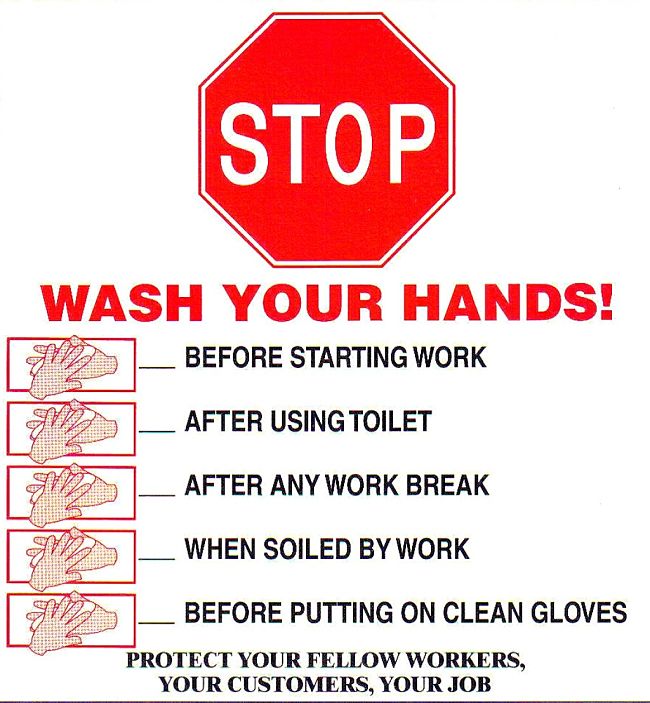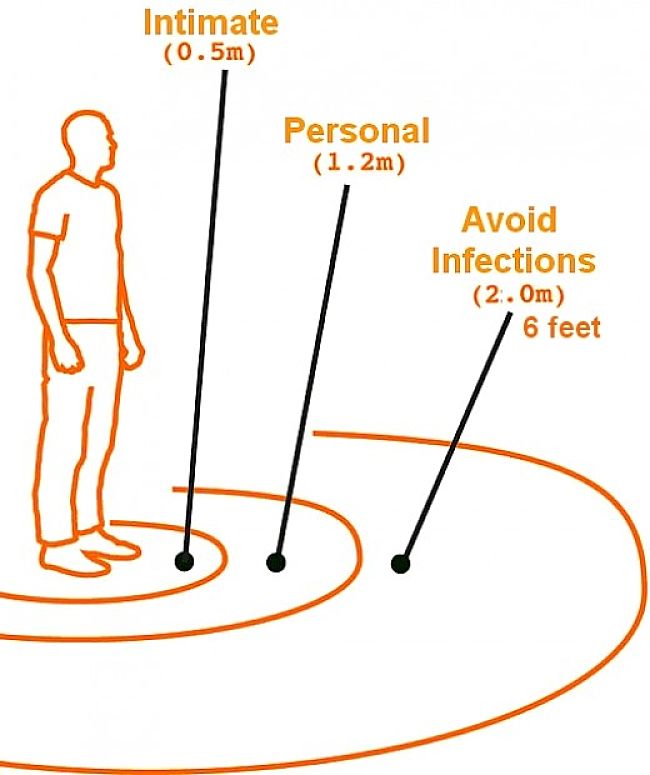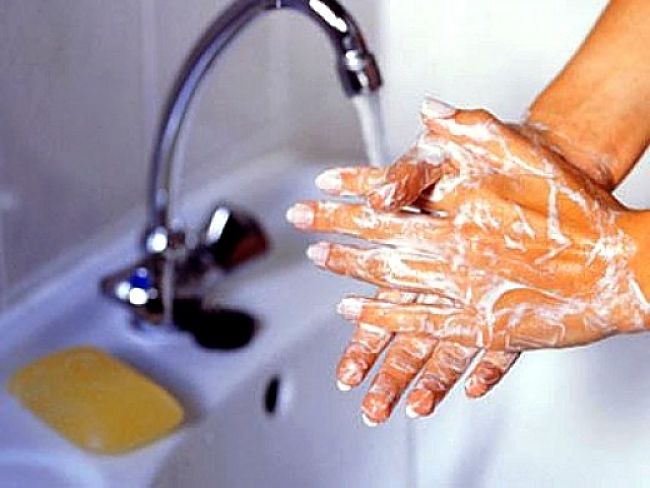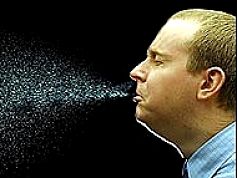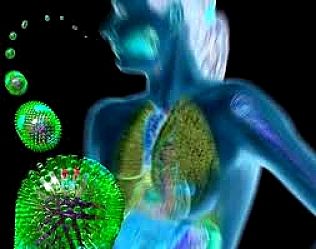How Infections Spread in the Workplace - Sites, Causes, Prevention Strategies
Infection control in the workplace begins by assuming that everyone is potentially infectious and the environment is dirty and highly infectious. Is this too tough? No, because the workplace is a major source of infection over which you have very little control. Your workplace can and does make you sick. Workplaces have a high density of people all sharing the same facilities and the same air through air conditioners. In many ways the workplace may be amongst the worst places in terms of risk of infection with only planes, public transport, schools, pubs, and over-crowded eating and entertainment venues being worse. In this article we will focus on the general office and factory environment - not on the high risk areas such as hospitals and food preparation facilities, which generally have stringent published guidelines.
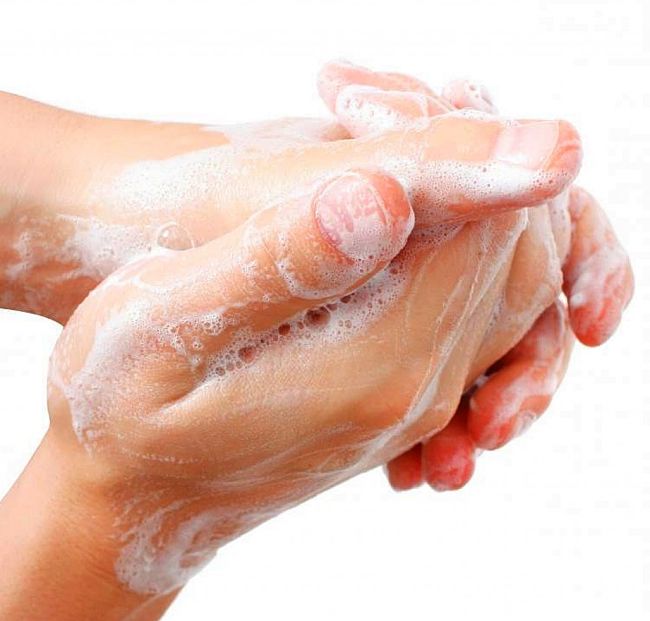
Infection is caused by a variety of pathogens such as viruses, bacteria, 'prions', protozoa and fungi that get into your body and multiply.
[A prion is an infectious agent composed of protein in a mis-folded form that are responsible for "mad cow disease" in cattle and Creutzfeldt–Jakob disease (CJD) in humans].
It can take a considerable amount of time before the microbes reach enough numbers in your body to trigger any signs of illness.
This means that your workmate who has caught the disease may be infectious and unwittingly spreading it amongst the people in the workplace during this preliminary incubation period.
Many people go to work when they are sick, or stay at work after the symptoms develop, and this adds to the infection risk.
Infection control and prevention in the workplace aims to stop you being exposed to pathogens by avoiding the locations and situations where and when you could be exposed.
Chain of Infection
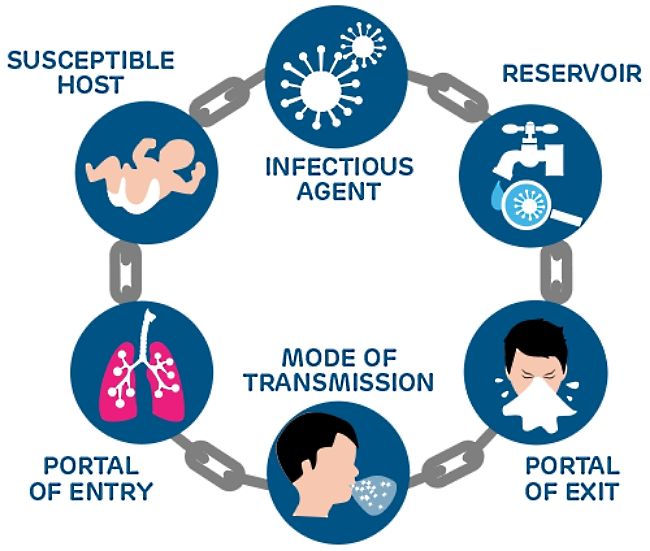
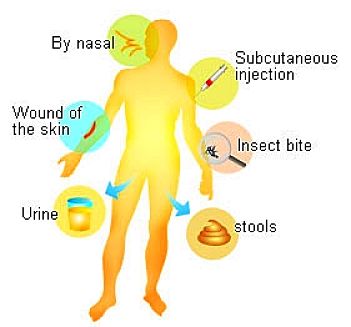
The process of infection can be represented as a chain - breaking one link in the chain will effectively control the risk of infection. When you identify a hazard, you need to identify the links in the chain to help you find the best way to deal with the hazard and so control the risk. Understanding the features of each link provides the key to understanding how to prevent the spread of infection.
Employers are obliged under various Occupational Health and Safety rules and regulations to provide safe workplaces and environments for their employees. Recently this has been expanded to include the supply and availability of adequate infection control procedures, guidelines and satisfactory first aid equipment and training. Many workplaces have also provided staff with individual supplies of anti-bacterial hand wash, and guidelines about how to wash hands properly.
Transmission of infectious Agents in the Workplace
Pathogens can be spread in a variety of ways that require different control strategies:
- Airborne transmission - this includes air-conditioning, coughs or sneezes that release airborne pathogens in droplets that collect on various surfaces and can be inhaled directly rom the air.
- Contaminated kitchen utensils or food - the pathogens in a person's saliva, bodily fluids or faeces may infect food and contaminate various objects, if their hands are dirty.
- Contaminated surfaces such as door handles, lift buttons, stair banisters and other surfaces in the office may be ridden with pathogens.
- Skin-to-skin contact - some pathogens can be transferred through touch, or by sharing personal items, clothing or objects, or even shaking hands or kissing.
- Contaminated objects - putting common objects such as pens, pencils, cups, glasses and hands into your mouth, nose or eyes.
- Direct contact with body fluids - pathogens in urine, saliva, blood, faeces can be transmitted to another person's body via abrasions, cuts, or through the membranes of the eyes and mouth. Insects can also trasnfer pathogens.
Assumption of Continual Risk
The best way of approaching the control and prevention of infection is to start by assuming the everyone and everything you come into contact with is potentially infectious. Start with the premise that everyone around you is sick and everything is contaminated and gradually identify the low risk factors. This is better than the other way around - assuming that everything is sterile and identifying the contaminate sites. You cannot assume that all of your colleagues have stringent hygienic practices and that the cleaners are thorough and meticulous in cleaning every surface. You don't know if one of your colleague is sick and hiding the symptoms, or in the early stages of the disease showing no symptoms, but being contagious.
Personal hygiene practices
One way of breaking many cycles of infection in the workplace is to develop and follow your own very stringent and meticulous hygiene practices. The major infection prevention and control procedures for personal hygiene include:
- Hand washing - the spread of many pathogens can be prevented with regular hand washing. You should thoroughly wash your hands with water and soap for at least 15 seconds after visiting the toilet, before preparing food, and after touching clients or equipment. Dry your hands with disposable paper towels.
- Unbroken skin - intact and healthy skin is a major barrier to pathogens. Once broken pathogens can get in. Any cuts or abrasions should be covered with a waterproof dressing.
- Avoiding skin-penetrating injuries, e.g. via a contaminated needle or other sharp object or through a bite by an infected animal or insect.
- Gloves - wear gloves if you are handling body fluids or equipment containing body fluids, if you are touching someone else's broken skin or mucus membrane, or performing any other risky procedure when offereing first aid.
- Personal items - don't share towels, tea towels, clothing, razors, toothbrushes, shavers or other personal items.
- Kitchen utensils - don't share glasses or cups - and assume that everything in the communal kitchen, tea rooms and lunch rooms are dirty and contaminated. Wash everything thoroughly before use - better still only use you own glass or cup.
- Shared computers, printers and photocopiers - These items may be seldom cleaned and may become highly contaminated. They are major risks of infection.
Classic sources of infection that you may not be aware of
There are many major sources of infection that you may not be aware of:
- Door handles, particularly toilet doors, entry doors and internal office doors. When you go to the bathroom you may always thoroughly wash you hands. But then you grab the door handle when you leave. It is likely that the door handle is highly contaminated by your colleagues who may not wash their hands as thoroughly as you do. You see surgeons turning off taps with their elbows for very good reasons. Use a paper towel or open the door with you little finger ('pinkie').
- Lift buttons, lift railings, door handles - how often are these surfaces cleaned? Everyone in the office touches these surfaces several times a day with their index fingers which they then put in their mouth and use to handle food. Use you little finger instead.
- Stair Railings - Do you grab the railings when climbing the stairs? This is another site of infection.
- Telephones - Do you use communal phones and do other people use your phone or answer it for you? Telephones are laden with droplets sprayed out when youand someone else speaks. They are seldom cleaned. They are a major source of infection.
- Computer keyboard and mouse - You probably would prefer not to know how dirty your own keyboard and mouse can become. The risk gets much worse when several people are using the same equipment. Clean these items regularly and wash your hands before meals after using the computer. Don't eat while you are using your computer.
- Conference facilities, tables, office furniture - None of these items may be cleaned very often and they are used by many people in the office. Wash your hands after the meeting.
- Blower type hand dryers - You may think that these common devices are clean. They are not! Often they will be blowing pathogens all over you hands. The blowers re-cycle the air in the bathroom which may be laden with infected droplets. The internal surfaces of the blowers are never cleaned and are ideal warm environments for pathogens to multiple. Use the paper towels if available, otherwise just shake your hands dry.
- Soap dispenser button - this is likely to be riddled with bugs. Hopefully thorough washing of your hands will remove the bugs from your fingers.
- Morning teas and food at office events are classic cases of high risks that you may not be aware of. You have no way of knowing whether the food is safe and has been prepared and handled hygienically. Be very careful what you choose to eat. The worse items are foods such as dips. People take a biscuit, chip or cracker plunge it into the dip and eat it. However many people will take a bite and re-use the same cracker to get more dip. Think about how quickly samples of many people's saliva will end up in the dip - Yuck! Beware of home cooked food!
Food preparation as a Source of Infection
When preparing food, you should:
- Wash your hands before and after handling food.
- Avoid touching your hair, nose or mouth.
- Keep hot food hot, and cold food cold.
- Use separate storage, utensils and preparation surfaces for cooked and uncooked foods.
- Wash all utensils and preparation surfaces thoroughly with hot water and detergent after use.
Managing Contact with your Colleagues
This may seem bizarre but it is essential to preventing infections - your colleagues are the main reservoirs of pathogens in the office (sorry this is reality).
- What to do if you colleague is sick or showing the first signs of illness?Tell them to go home! Maybe you should find somewhere else to work or go home yourself!! Seriously this may be your only option. Your colleagues should not be sick at work. Keep a safe distance (at least 6 feet or 2 metres) from people who are sick with a cough, fever, or sore throat. Wash your hands frequently and avoid touching your eyes, nose or mouth. It might appear strange or rude, but it can prevent infection.
- If you're sick yourself, don't come to work. If you are better, but still have a mild cough, cover your mouth when you sneeze or cough. Maintain a distance of 6 feet or 2 metres from your colleagues. When you cough or sneeze you should immediately wash your hands with soap and water to stop spreading the droplets to the things you touch. Every employee should have a bottle of antimicrobial hand cleanser on his or her desk and use it often and well. Flu and other diseases costs billion of dollars in lost work time each year, and it isn't that hard to prevent if you and your colleagues are vigilant and use common sense.
- Hand washing is the single most important thing you can do to prevent the spread of a cold or flu virus. Most health experts recommend washing hands with warm water and soap for at least 20 seconds - or about the time it takes to sing "Happy Birthday to You." Then, make sure you thoroughly dry them with a paper towel. But remember that the flu germ can get into any kind of wet membrane on your body. The flu germ can live for days and days, maybe weeks - it stays there just waiting to infect you. It is not a cell; its not a bacteria. It's a virus, which is basically a strain of DNA. It won't be killed by most antimicrobial hand cleansers that only work for bacteria. That's what makes viruses so dangerous. Most can't be killed with antibiotics or vaccines.
- Remember that most adults can infect others with the flu starting from one day before symptoms develop and up to five days after becoming sick.
- Office Mangers should make sure that common work areas are cleaned thoroughly and often during the flu season to prevent that transfer of germs from surfaces such as counters, conference tables and telephones. Be aware that if you touch a contaminated surface and then touch your mouth, eyes or nose, you have given an easy avenue for the flu virus to enter your body
Things to Remember
- Infection control in the workplace aims to prevent pathogens being passed from one person to another.
- The foundation of good infection control is to assume that everyone is potentially infectious and every surface is laden with bugs.
- Basic infection control procedures include frequent hand washing and keeping the workplace clean and managing you contact with you colleagues, especially if you or they are sick, feeling sick or showing early signs of sickness. {Perhaps we should all use face masks that are common in Asian countries)
